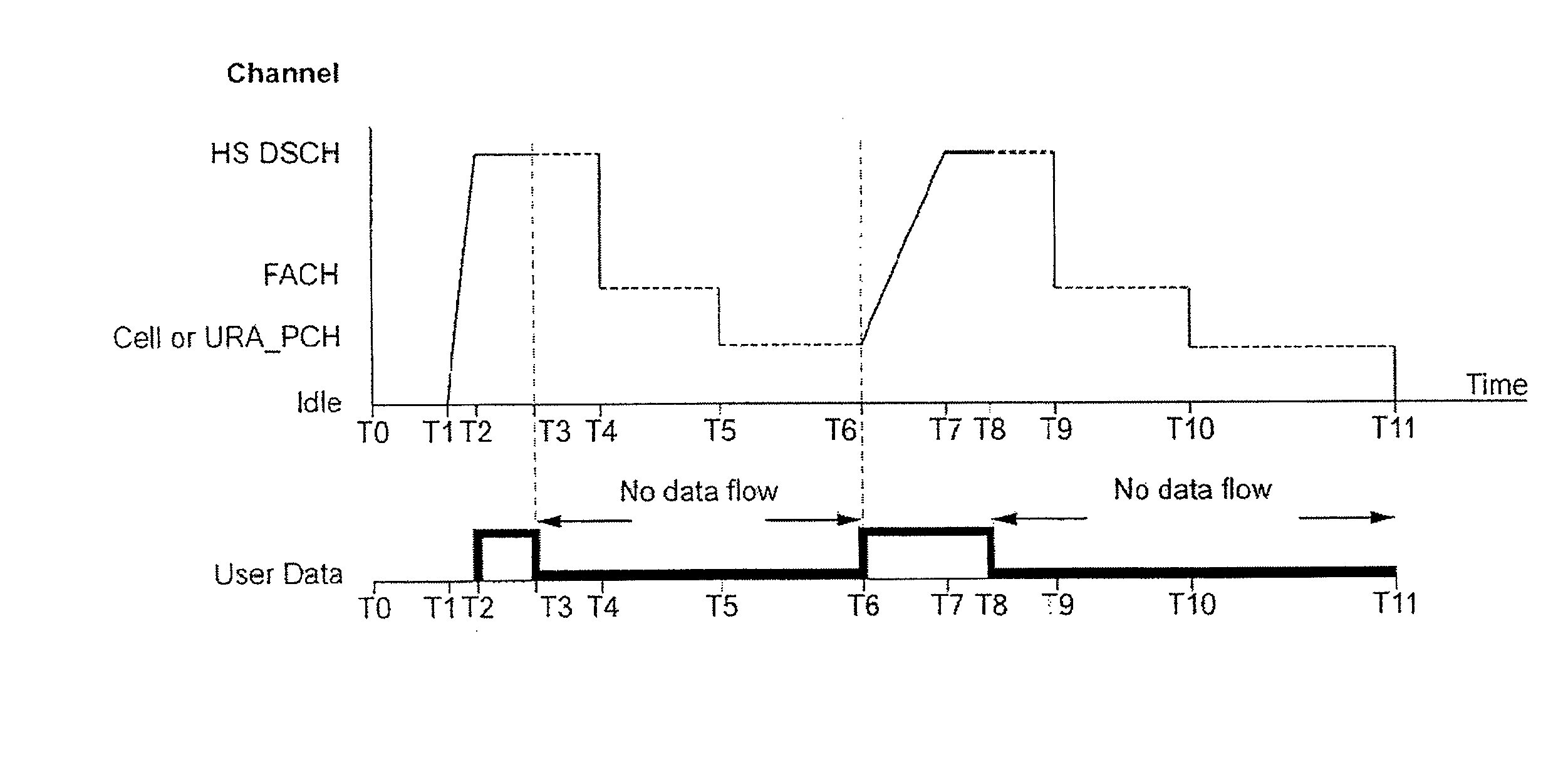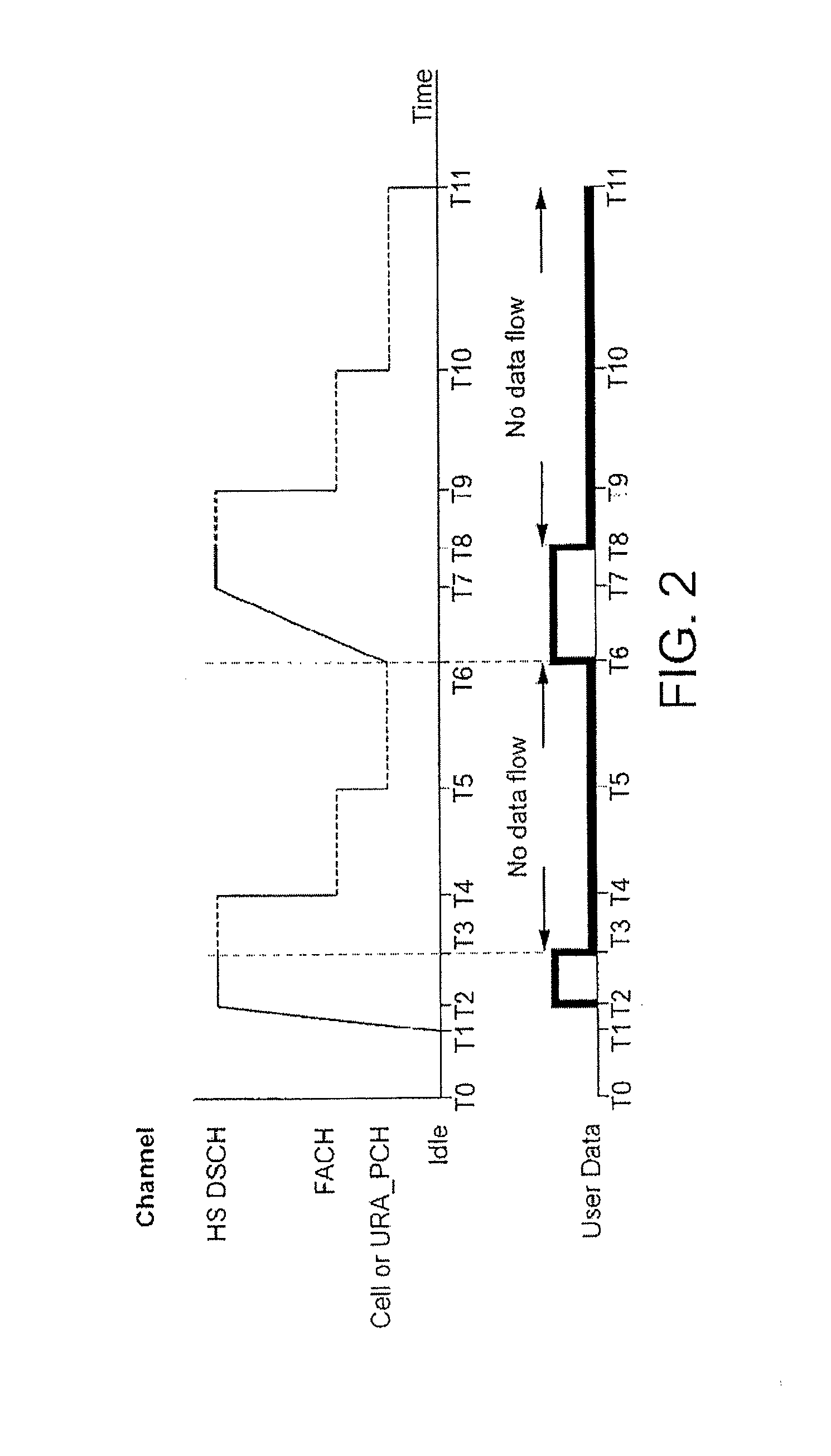Telecommunications system and method
a technology for telecommunications systems and devices, applied in transmission systems, network traffic/resource management, instruments, etc., can solve the problems of small difference in power consumption between idle state and active state of hspa mode, and achieve efficient use of physical resources, improve network latency, and reduce latency
- Summary
- Abstract
- Description
- Claims
- Application Information
AI Technical Summary
Benefits of technology
Problems solved by technology
Method used
Image
Examples
Embodiment Construction
[0026]As indicated above, advantageously the present invention enables a state transition timer (also known as an Active Release Timer (ART)) associated with a terminal's state to be adjusted dynamically depending upon a parameter relating to the mobile terminal or a user of the mobile terminal, such as the number of mobile terminals in a cell and / or the Quality of Service required by those terminals. To illustrate an embodiment of how this may be implemented, with reference to FIG. 1, an example will be provided of the process involved where a UE establishes a network data communication.
[0027]The subscriber's mobile device (UE) is shown at 1, which may be any suitable portable device, including a handheld mobile telephone, a personal digital assistant (PDA) or a laptop computer equipped with a network connectivity datacard.
[0028]The UE communicates with the core network via the Radio Access Network (RAN), which, for UMTS, the UTRAN is comprised of node Bs (5,6,7,8) and RNCs (2,3,4)...
PUM
 Login to View More
Login to View More Abstract
Description
Claims
Application Information
 Login to View More
Login to View More - R&D
- Intellectual Property
- Life Sciences
- Materials
- Tech Scout
- Unparalleled Data Quality
- Higher Quality Content
- 60% Fewer Hallucinations
Browse by: Latest US Patents, China's latest patents, Technical Efficacy Thesaurus, Application Domain, Technology Topic, Popular Technical Reports.
© 2025 PatSnap. All rights reserved.Legal|Privacy policy|Modern Slavery Act Transparency Statement|Sitemap|About US| Contact US: help@patsnap.com



